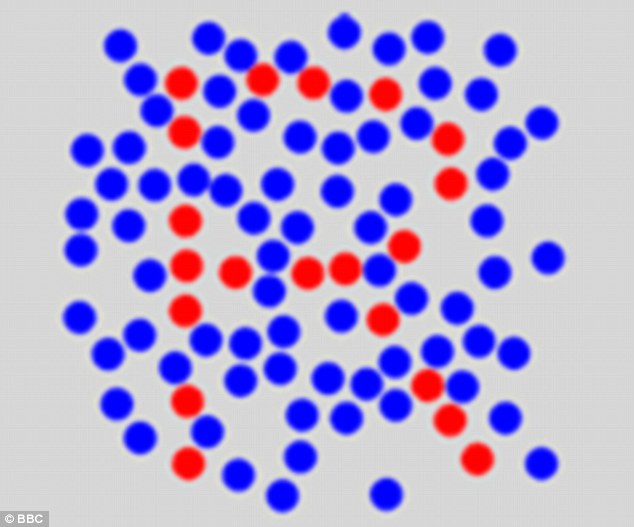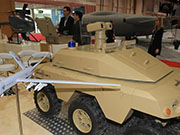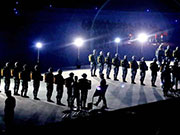

Leonardo da Vinci was said to possess superior powers of recollection, as well as the composer Rachmaninoff and the former American president Theodore Roosevelt.
And if you suspect that your ability to memorise is greater than most, a puzzle promises to prove it once and for all by challenging you to look at two patterns and put them together in your mind to form a letter.
The challenge claims to prove whether or not you have a photographic memory, although it's more accurate to say it tests eidetic memory - the ability to recall images.

The challenge is to memorise the two images and put them together in your mind's eye to see if you can form a letter from the red dots

However if you suspect that your powers of recollection are greater than most, a puzzle that involves memorising two patterns and putting them together to form a letter promises to test whether you really do have a photographic memory.
To take the test, you have to look at at a seemingly random pattern of red and blue dots and try to memorise the picture. You then do the same with a second combination of blue and red dots.
Once you feel as if you have successfully memorised the second image, you have to combine the two in your mind's eye to see if you can form a letter from the red dots.
If you've managed to remember them correctly, you should come up with the letter 'R'.
The question is part of a 'photographic memory' test, created for Playbuzz, and according to the site only one per cent of the population will pass.

If you have memorised the images correctly, you should form the letter R. However, the puzzle forms part of a test that only one per cent of the population will pass.
Although the puzzle claims to test photographic memory, it is in fact a challenge for eidetic memory, the ability to recall images from visual sources in great detail after only a short exposure to them.
It's most common in early childhood with between two and 10 per cent of youngsters said to be able to recall visual information after only short periods of absorbing it.
However, unless it's nurtured the ability usually fades by the age of six.
Eidetic memory is said to be non-existent in adults. The existence of so-called photographic memory - the ability to recall a page of text after reading - has also never been proven.
However, people such as Nikola Telsa, the inventor of the Telsa coil and alternating current machinery, have claimed to be able memorise entire books.
Theodore Roosevelt, the 26th president of the US, said he could remember and recite entire pages of the newspapers he'd read.
Leonardo Da Vinci is commonly believed to have had an photographic memory.
However, it would be more accurate to describe his abilities as eidetic as he could draw a detailed portrait from memory after a single meeting.
Day|Week

 Beijing steps up security for 'two sessions'
Beijing steps up security for 'two sessions' Chongqing sniper’s new record: 13 holes on a rice grain
Chongqing sniper’s new record: 13 holes on a rice grain Women put on spring dresses in Hangzhou
Women put on spring dresses in Hangzhou UAVs at Unmanned Systems Exhibition & Conference in UAE
UAVs at Unmanned Systems Exhibition & Conference in UAE PLA's paratroopers conduct night training
PLA's paratroopers conduct night training Three new-type tank landing ships join the East China Sea Fleet
Three new-type tank landing ships join the East China Sea Fleet 3,492 reflector panels of China's mega telescope installed
3,492 reflector panels of China's mega telescope installed Stunning Kuche on the Silk Road
Stunning Kuche on the Silk Road Tunisian man creates art of sand in Hangzhou
Tunisian man creates art of sand in Hangzhou Goddess teacher shares fitness program online
Goddess teacher shares fitness program online